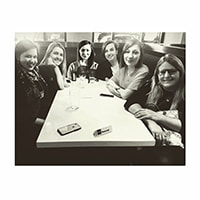
The tale of ‘good’ migrants and ‘dangerous’ refugees
A look through the eyes of six scholars from the post-Yugoslav space.
|22.07.2020
|
The "good migrant" reaffirms the self-perpetuated superiority of the Western country where she is living, working, or simply dwelling.
Meanwhile, the “foreigners” trying to cross borders into the “European Fortress” are finding the bar raised.
Because we are racialized as white, people don’t immediately assume we are migrants or refugees.
When we step outside academia, we step back into the structures in which we are considered “other”.
The region is, thus, simultaneously othered and implicated in further othering in migration discourses.

The Yugoslawomen+ Collective
The Yugoslawomen+ Collective is a group of six female scholars (Dženeta Karabegović, Slađana Lazić, Vjosa Musliu, Julija Sardelić, Elena B. Stavrevska, Jelena Obradović Wochnik) of and from the post-Yugoslav space, currently working in Global North academia. The Collective has been brought together through frustration with the pattern in the struggles over knowledge production we have all experienced and the love for knowledge, education, and the region we have called “home.”
DISCLAIMERThe views of the writer do not necessarily reflect the views of Kosovo 2.0.
This story was originally written in English.